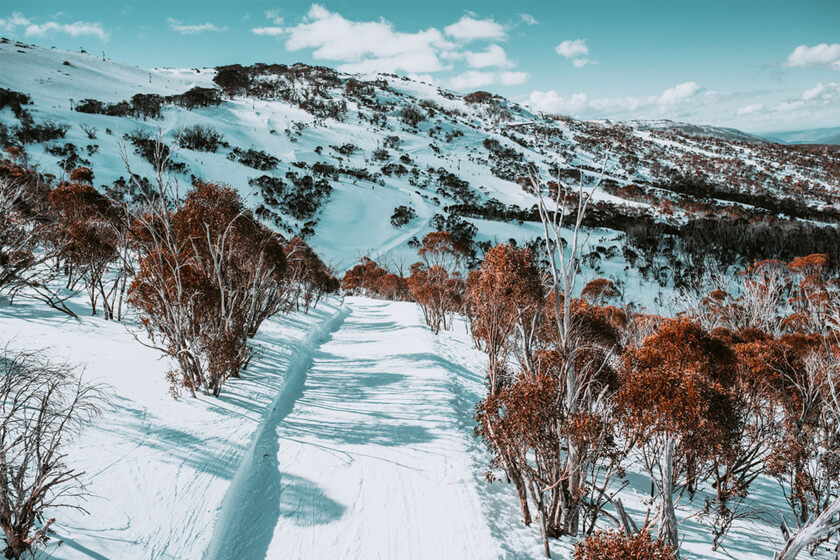Learn About the Fascination Behind Snow In Australia and Its Mountainous Areas
Learn About the Fascination Behind Snow In Australia and Its Mountainous Areas
Blog Article
Discover the Remarkable Effects of Snow in Australia on Local Ecological Communities
Regardless of its reputation for sun-soaked landscapes, Australia additionally flaunts areas buried by snow-- a phenomenon that profoundly affects the country's special ecosystems. The protecting properties of snows secure vegetation and fauna among the coldest wintertimes, while the melting snow nurtures rivers and aquatic life.
The Unanticipated Regions of Snowfall in Australia
The high nation regions of New South Wales, Victoria, and Tasmania are especially known for their winter season snow. The Snowy Hills in NSW, for circumstances, receive abundant seasonal snow, using a plain comparison to the nation's regular hot, dry environment. The visibility of snow in these regions significantly affects local ecosystems, consequently impacting the nation's distinct biodiversity.

Just How Snow Impacts Australia's Unique Plants
While it might appear unusual, snowfall in Australia plays an essential duty in shaping the nation's unique vegetation. The snow-filled wintertimes foster strength in Australian plant types. This is especially evident in the towering and sub-alpine areas, where snow gums and hill plum-pines prosper. These plants have progressed to make it through in extreme problems, with snow functioning as a safety blanket from severe winds and freezing temperature levels. The snow also adds to the wetness web content of the soil, supplying necessary hydration for plant during the dry summer season. In essence, the snow affects the timing of flowering and seed dispersal, the growth prices, and the survival of several plant species, showcasing the elaborate interplay in between environment and vegetation in Australia.

The Adaptations of Australian Fauna to Snowfall
Simply as Australia's vegetation has adapted to the wintery conditions, the regional animals also, display exceptional adaptations to the snowfall. It utilizes the snow as insulation, hibernating in rock holes beneath the snow to stay cozy. The Snow Skink, a types of reptile, changes its colour to white during winter months, providing camouflage against predators.
The Duty of Snow in Shaping Regional Ecological Communities
Fit the neighborhood ecosystems, the function of snow in Australia is both multilayered and profound. It influences the distribution link of flora and fauna, mainly specifying the biodiversity of alpine and sub-alpine regions. Snow provides an essential water source, feeding rivers and storage tanks as it thaws, hence supporting a selection of marine life forms. In addition, snow works as an insulator, shielding ground-dwelling organisms from severe cold. It plays a considerable duty in dirt development and nutrient biking. The regular freezing and thawing of soil caused by snowfall cultivates the breakdown of rocks, enhancing soil fertility. The visibility of snow forms the plant life patterns, pet behavior, and overall sustainability of Australia's distinct environments.

The Future of Snowfall in Australia: Effects and forecasts

Offered the vital function snow plays fit regional environments, the future of snowfall in Australia is attracting raising focus from ecologists and researchers. Current climate versions anticipate a considerable reduction in snowfall due to international warming, with potentially extensive influence on regional ecological communities. Less snow could result in lowered water accessibility in towering areas, detrimentally influencing wild animals environments and plant life. Additionally, it can modify the timing of seasonal adjustments, interrupting the life process of many indigenous species. The tourist sector, greatly dependent on the winter months snow season, might additionally encounter substantial difficulties. Consequently, recognizing these predictions and their ramifications is important to create reliable conservation methods, ensuring the preservation of Australia's distinct biodiversity and the sustainability of its economy.
Final Thought
The function of snow in Australia's ecosystems is essential yet usually overlooked. Therefore, the snow in Australia is more than a natural phenomenon; it's an essential player in the nation's ecological story.
In spite of its reputation for sun-soaked landscapes, pop over to this web-site Australia additionally flaunts areas buried by snow-- a sensation that greatly affects the country's unique communities. It uses the snow as insulation, hibernating in rock gaps below the snow to stay warm - Does Australia Get Snow.In forming the regional ecological communities, the role of snow in Australia is both extensive and multilayered. The presence of snow shapes the greenery patterns, pet actions, and general sustainability of Australia's one-of-a-kind ecosystems
Offered the critical role snow plays in forming neighborhood ecological communities, the future of snowfall in basics Australia is drawing boosting attention from scientists and environmentalists.
Report this page